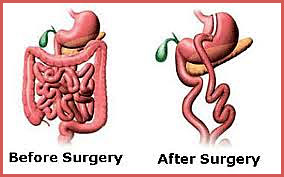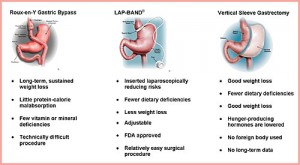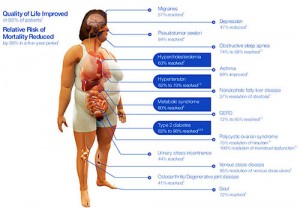A person is considered obese due to over accumulation of fat that might have a negative effect on his health. Obesity has been termed has an epidemic by the World Health Organization (WHO) and conditions related to obesity are becoming increasingly prevalent. If BMI (Body Mass Index) of a person is in between 25-29.9 then he or she is overweight and if it’s 30 or above then a person is considered as obese. It is a known fact that about 1 million people across the world are overweight and about 300 million people of them are obese. Reduced physical activity and increased consumption of energy-dense foods that are high in sugars and saturated fats are some of the prominent causes of obesity.
Obesity is also related with increased risk of disability and illness. Overweight or obese people are exposed to many health related problems such as high blood pressure, cardiovascular disease, depression, heart disease, Osteoarthritis, hypertension, stroke, Gynecological problems (abnormal menses, infertility), type 2 diabetes and certain types of cancer. Obese people above 50 years of age are at an increased risk of developing coronary heart disease. If BMI of an adult is below 25 kg/m2 and who have gained 10 or more pounds after 21 years of age, then they are at an increased risk of several diseases.
Many people turn to fitness, diet and medication in order to treat their obesity. These weight losing methods alone cannot achieve effective long-term weight management. Obesity Surgery can be regarded as the only solution for the individuals who want to lose weight and maintain the same in future.. Surgical procedures are beneficial for those people who have failed to reduce their weight by other therapies. Gastric bypass, vertical banded gastroplasty, lap band system adjustable gastric banding and biliopancreatic diversion are some of the surgical procedures for reducing weight.
Gastric Bypass, also referred to as Roux-en-Y, is a procedure that uses both malabsorptive and restrictive elements. During the surgical procedure, stomach is stapled in order to make a small pouch. Then a part of the intestines and most of the stomach are bypassed. The small stomach pouch is then attached with a part of the intestine. The purpose is to reduce food intake so that a person absorbs less calories and nutrients. This minimally invasive approach results in rapid initial cut back.
Vertical Banded Gastroplasty (VBG) is another most sought after restrictive procedure. A small stomach pouch is created in this procedure to limit the quantity of food that the stomach can hold. A person will feel fuller soon as the stomach is able to hold less food. The calories and nutrients are digested in a normal manner. There are two potential benefits of this procedure such as vitamins and nutrients are properly absorbed and lower risk of intestinal obstruction or leakage.
Another restrictive procedure is lap-band system adjustable gastric banding. This procedure also limits the quantity of food that the stomach can hold. For this, procedure uses inflatable silicone band that is placed around the upper part of the stomach. A small pouch is then created that helps in restricting the quantity of food consumed at a time. The time for emptying the stomach is also increased by narrowed stomach outlet. By the means of this procedure, the food intake is reduced that results in effective weight loss. This minimally invasive surgical approach involves no cutting or stapling of the stomach or intestinal re-routing. Also this procedure offers healthy and steady weight loss and involves low malnutrition risk.

The malabsorptive procedure of biliopancreatic diversion (BPD) involves the removal of around three-fourths of the stomach. Then the final segment of the small intestine is linked to the stomach pouch and the food is then diverted from this stomach pouch. The separation of the nutrients takes place from the bile which decreases nutrient absorption and calorie intake. This procedure allows larger meals as large stomach pouch has been created. One of the major benefits of this procedure is the great amount of initial weight loss as a result of high levels of malabsoption.
Apart from surgical procedures, non-surgical procedures can also offer potential options to lose weight, but for a short-term purpose. Exercising and eating sensibly are the two common non-surgical approaches. But these approaches results in quick regain when one stops exercising or when their dieting ends. Yo-yo effect is the name given to the cycle of losing and gaining weight back again. This effect in the future makes it harder to lose weight. Surgical weight loss procedures are more effective as they provide weight loss on a long-term basis.

